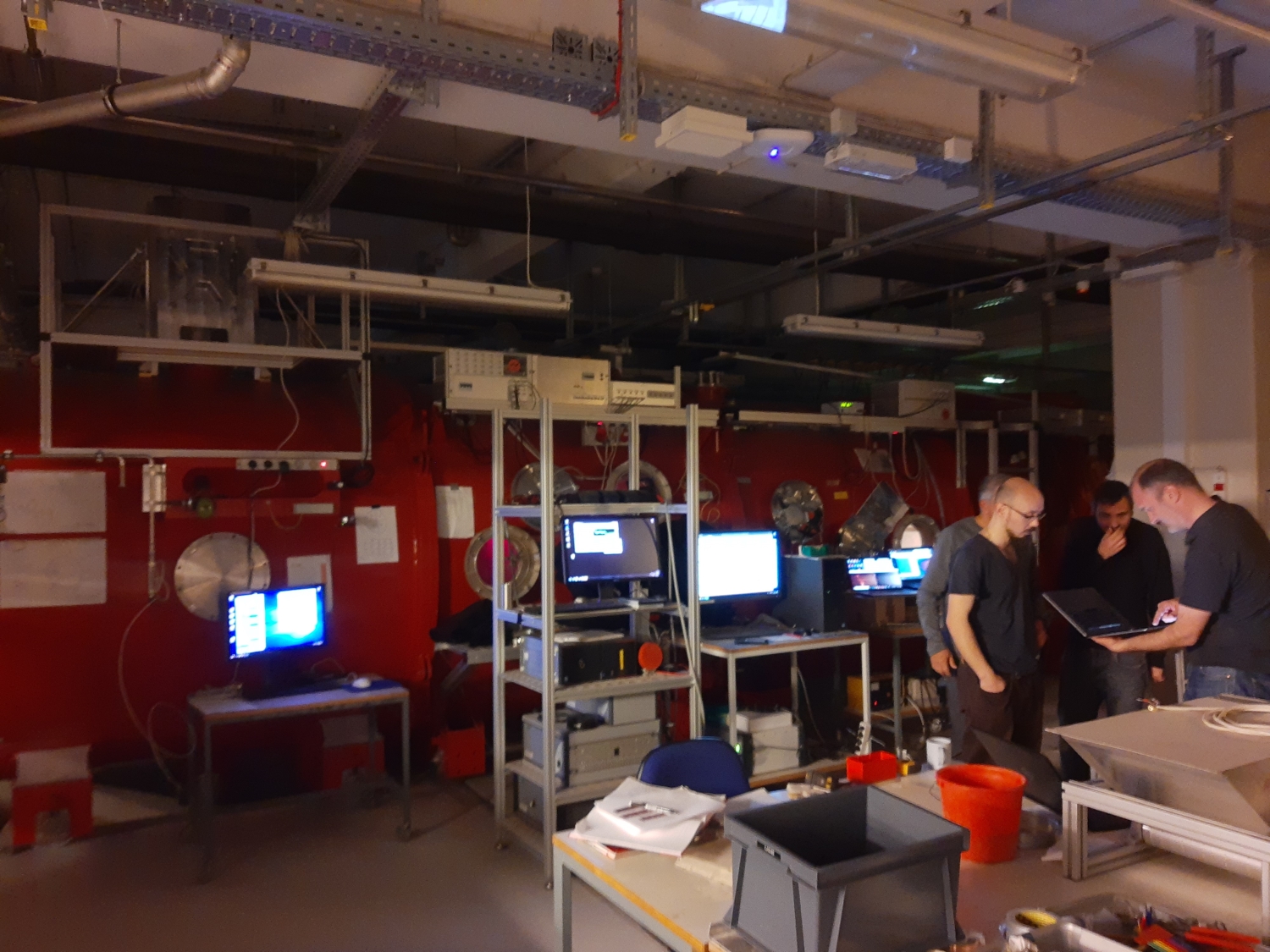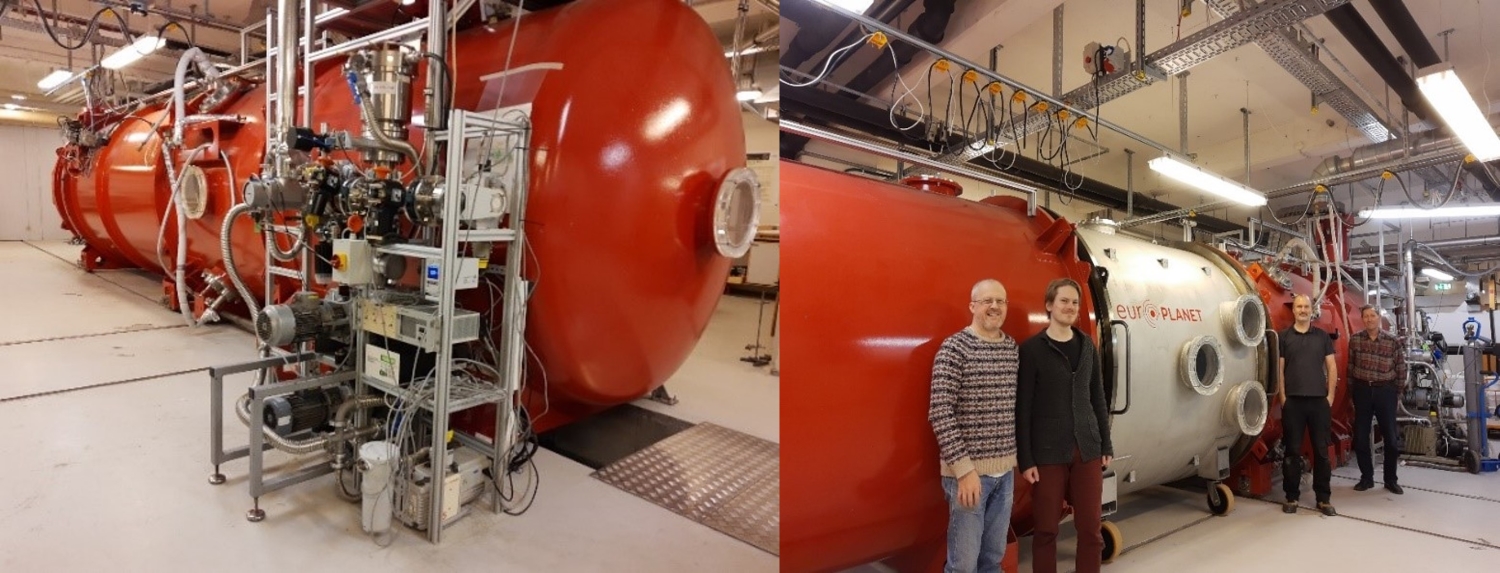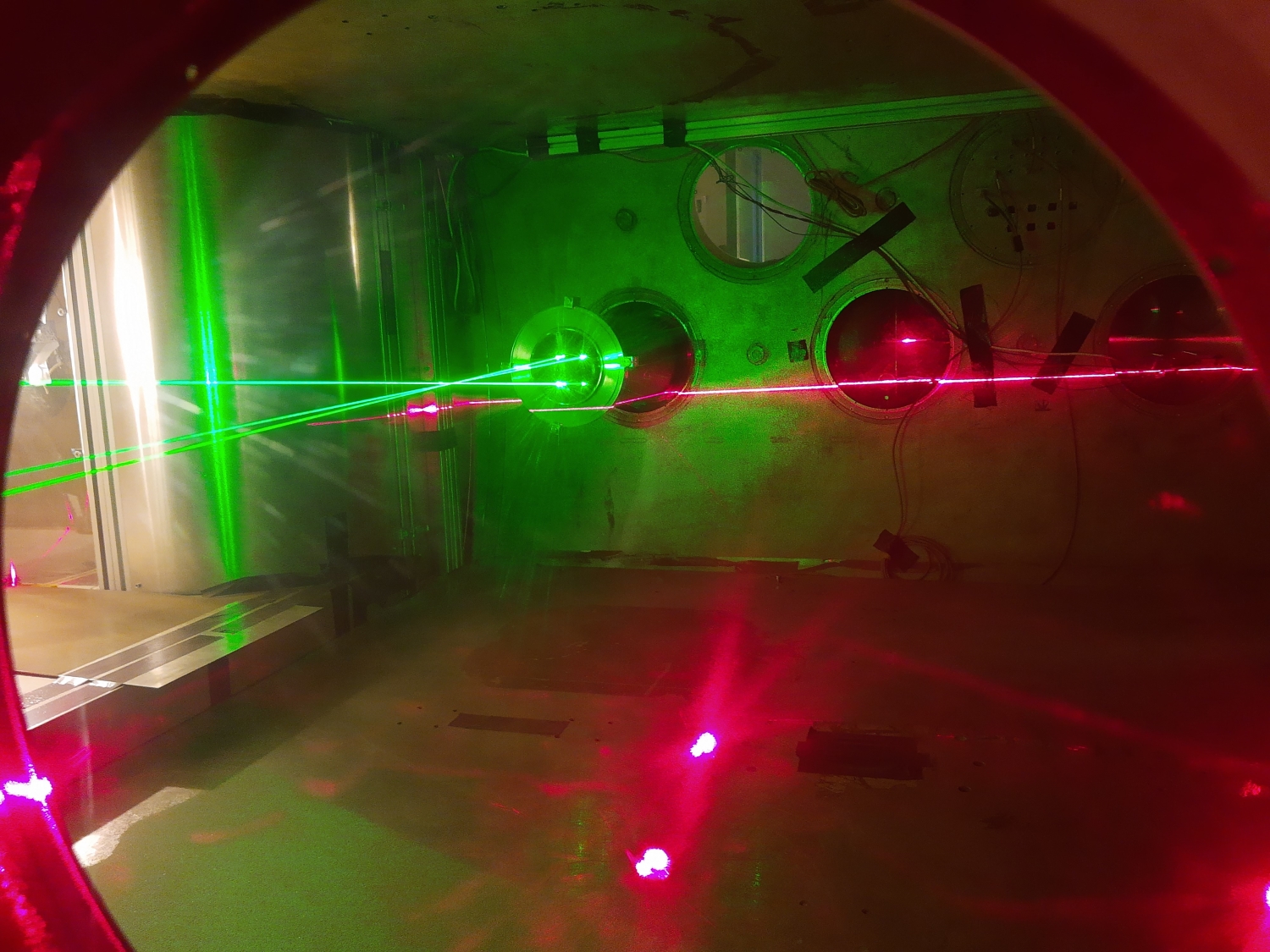A European Planetary and Lunar Simulation Facility
- 1Aarhus University, Physics and Astronomy, Aarhus, Denmark (merrison@phys.au.dk)
- 2Aarhus University, Geoscience, Aarhus, Denmark
Abstract
This unique and now improved planetary simulation facility is capable of re-creating extreme terrestrial, Martian and now Lunar-like environments. It has been supported by various EU networking activities including Europlanet 2024 RI. This facility is also used by ESA and NASA and has recently become an ESA Ground Based Facility making it possible to apply for funding from ESA to access this facility for Space related research projects (up to 50keuros) [1].
Europlanet Transnational Access
This environmental simulator facility is utilized for a broad range of research programs including; the study of other planets (such as Mars), for recreating extreme terrestrial environments, or in specific investigations involving aerosols and other forms of Aeolian particulate transport. The facility has been involved in the Europlanet 2024 Research Infrastructure through which a trans-national access program has allowed numerous research groups access to this facility. Some selected recent projects are listed below;
- Sand transport and ripples on Mars [3,7]
- Dust aerosols at low pressure. [2,6]
- Polar CO2 ice on Mars (USA) [5]
- LIBS system on Mars2020 (ISAE France) [4]
- In-situ utilization on Mars2020 and dust loading. Imperial College UK [8]
Other activities include the development, testing and calibration of sensor and planetary lander systems, both for ESA and NASA. Testing for missions ExoMars 2020 and Mars Perseverance were carried out.

Figure 1 The main Planetary Simulation Facility 2022 guests carrying out a Europlanet2022RI funded experiments involving sand transport under Martian and terrestrial conditions [3];
Design and operation
The simulator consists of a 35m3 environmental (thermal-vacuum) chamber within which a re-circulating wind tunnel is housed. The wind is generated by a set of two fans which draw flow down the 2m×1m tunnel section and return it above and below. Wind speeds in the range 1-40 m/s have been demonstrated. Cooling is achieved by a novel liquid nitrogen flow system which has achieved temperatures below -160ºC. The inner chamber is thermally isolated from the vacuum chamber. An atmospheric cooling system allowing independent control of the air temperature (tested to -50°C) and a range of particle imaging, microscopy and laser based techniques allow study of aerosols [2].
Recent Improvements: Major recent improvements to the facility (funded by Europlanet 2024RI) include; an additional Roots and turbo-pump system allowing pressures below 10-4 mbar to be achieved (important for lunar simulation). An additional test section has been constructed, dedicated to lunar/icy-moon simulations. An advanced cooling/heating element has been constructed funded by ESA and improved aerosolization systems for dust and ice studies. Additional recent sensor systems include a new Laser Doppler Velocimeter system and an optical transmission (opacity) sensor for studying aerosol properties.

Figure 2 Additional pump system (left) and a new test section (right)
Lunar simulation: Although the pressure achievable at this facility (10-4mbar) is far larger than that of the lunar surface, for dust transport / exposure research (or testing) it is sufficient that dust grain trajectories are unaffected by drag i.e. the scattering length is larger than the size of the chamber. The large volume of this chamber also allows relatively large scale regolith simulation. This could for example aid in development/testing of in-situ resource utilization technologies.

Figure 3 studying resuspended dust using a Laser Doppler Velocimeter and a light transmission (opacity) system.
Sand, dust and ices on Mars
With control of wind flow at low pressure and temperature this facility is well suited for recreating the environment at the surfaces of terrestrial type planets such as Mars, Earth and icy moons. The interaction of wind and the planetary surface, specifically the transport of sand and dust is fundamental to understanding the evolution of the planets’ surface and atmosphere. Laboratory studies of the entrainment, flow, deposition and erosion are scarce and empirical in nature. The effects of low atmospheric pressure, composition, temperature can now be studied in detail.
This laboratory has been part of an EU supported European collaboration called ROADMAP including groups from BIRA in Belgium, CSIC in Spain and UDE in Germany, to study dust aerosols on Mars [Home (aeronomie.be)].
Conclusion
This planetary simulation facility has many unique and recently improved features which make it well suited for both planetary research applications and the development/testing of instrumentation. Details of some of the most recent and upcoming collaborative research activities will be summarized. For information on access to this facility please contact the author.
Acknowledgements
This laboratory is a member of Europlanet 2024 RI which has received funding from the European Union's Horizon 2020 research and innovation programme under grant agreement No 871149.
The laboratory is also a member of the ROADMAP project which has received funding from the European Union’s Horizon 2020 research and innovation programme under grant agreement No 101004052.
References
[1]https://scispace.esa.int/scispace-platforms/ground-based-facility-gbf/
[2]A. Waza et al., (2023) PSS 227, 105638.
[3]Yizhaq, H., et al., Nat. Geosci. 17, 66–72 (2024)
[4] Murdoch, N., et al., PSS, 165 (2019) 260-271
[5] G. Portyankina et al., Icarus 322, 210–220 (2019)
[6] E. del Bello, et al., Scientific Reports, 8, 14509 (2018)
[7] Andreotti and Claudin et al.. PNAS 5, 118 (2021)
[8]McClean, JB et al. and the MOXIE science team, PSS, 2020, Vol.191, p.104975
How to cite: Merrison, J., Iversen, J. J., and Rasmussen, K.: A European Planetary and Lunar Simulation Facility, Europlanet Science Congress 2024, Berlin, Germany, 8–13 Sep 2024, EPSC2024-37, https://doi.org/10.5194/epsc2024-37, 2024.